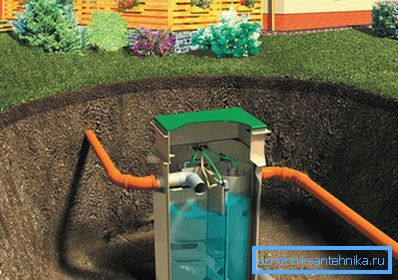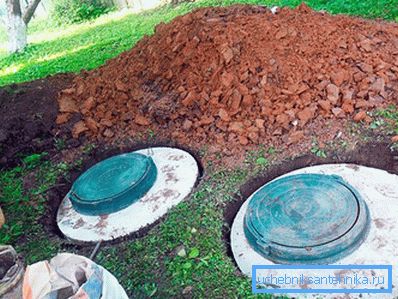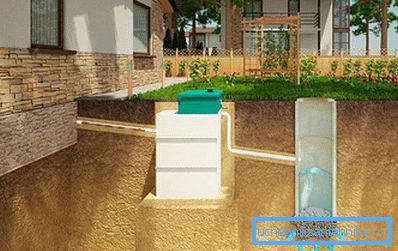Autonomous sewage in a private house
Living in a country house today is considered quite prestigious. Fresh air, little noise and quiet measured life are the best qualities of such a living. But in order for such a house to be called comfortable, it is necessary to provide it with all modern systems. One of the components of such housing is sewage.
Device

For a start it is worth knowing which components are included in the autonomous sewage system. First, it is the plumbing fixtures themselves (toilet, sink, bathtub). Secondly, it is a pipe. They will deliver drains from plumbing fixtures to the point of discharge. And the most important is the place where all the drains will be output.
If, in principle, everything is clear with the first two components, then the choice of the latter is an important matter. Here it is necessary to choose from a large number of options. And the choice itself will depend on the following factors:
- the depth of groundwater and the possibility of flooding the entire area;
- soil structure and type;
- the depth of freezing of land and climate;
- the number of people living and the amount of waste;
- size and topography of the site.
Only after weighing all the information you can take the best option.
What treatment plant to choose

The so-called sewage treatment plant can act as a collection point for all drains. The simplest option for draining sewage is to create a sump, although such a device can not be called "cleaning". According to the existing sanitary and hygienic rules, such a pit should be airtight. All the drains accumulate in the tank, and then are pumped out from there using an assenizator machine. Such a device will be convenient to install in the country. Where tenants appear rarely.

If the house is resident, then the cesspool is unlikely to fit. In this case, you can install a two-chamber septic tank or overflow wells. This option will be inexpensive, but it will have the opportunity to conduct wastewater treatment. And this means that such a sewage treatment plant will cope with a large volume of liquids.
Such a septic tank can be purchased in finished form or made independently. It consists of two containers interconnected. The first one, completely sealed, serves for the primary treatment of wastewater from large particles of pollutant. The liquid, falling into the tank, settles. As a result, all solids settle to the bottom and accumulate. Every 3–5 months, sewage must be pumped out.
Already cleaned drains through the pipe fall into the second chamber. This capacity is unpressurized and located in a special ground. It is made of gravel or rubble. As a result, drains are further cleaned.
Such a septic tank can be installed if up to 4 people live in the house permanently. In this case, the soil on the site should be sandy or sandy. Also, the depth of groundwater should be more than a meter.

For larger volume and better cleaning, a septic tank with filtration fields is used. Such a device requires large vacant areas. The septic tank itself is a container with several sections. In one, there is a sediment of large particles, then the drains enter the chamber with microorganisms. Here is the cleaning of organic pollutants. Then, the already clarified drains fall on the filtration fields (beforehand, the drains can pass through one or two chambers for additional purification using filters).
How to make a filter field

In order to make the filtration field, a free area of at least 30 m is necessary.2. In this area, dig a pit at least one meter deep. A cushion of gravel or rubble is placed at its bottom, up to 50 cm high. Then a network of pipes is laid (with drilled holes along the entire length) that will drain the clarified drains from the septic tank. From above everything is covered with gravel or rubble. To learn more about the structure of such fields, you can view the video.
The drains after cleaning in the septic tank will flow to the filtration field. After passing through a layer of stones, they are already in a purified state fall into the ground. Such a device can be used if the depth of groundwater is below 3 meters from the surface.

There are also expensive options for creating a cleaning system in an autonomous sewage system. These are stations of biological and artificial cleaning. Such septic tanks are able to work all year round and clean large volumes of waste. At the same time, the cleaning level reaches 98-99 percent. Such stations have a more complex structure and often require the use of electricity for their work. But many experts recommend using them. First, such devices can be installed on sites with practically any conditions. Secondly, such septic tanks serve for a long time and do not require periodic pumping of accumulated impurities.